Cabletron Systems MR9T-C Installation guide
- Category
- Bridges & repeaters
- Type
- Installation guide
This manual is also suitable for
Cabletron Systems MR9T-C is a Multiport Twisted Pair Repeater designed to be used with Ethernet or IEEE 802.3 type data communications networks and their physical layer components. It conforms to all applicable IEEE 802.3 specifications and has nine ports. Ports 1 through 8 are 10BASE-T compliant RJ-45 ports, while Port 9 is a BNC connector that offers a thin-coax connection. The MR9T-C also has a switch-selectable internal 50 ohm terminator, which can be used to enhance signal quality in certain network configurations.
Cabletron Systems MR9T-C is a Multiport Twisted Pair Repeater designed to be used with Ethernet or IEEE 802.3 type data communications networks and their physical layer components. It conforms to all applicable IEEE 802.3 specifications and has nine ports. Ports 1 through 8 are 10BASE-T compliant RJ-45 ports, while Port 9 is a BNC connector that offers a thin-coax connection. The MR9T-C also has a switch-selectable internal 50 ohm terminator, which can be used to enhance signal quality in certain network configurations.




















-
 1
1
-
 2
2
-
 3
3
-
 4
4
-
 5
5
-
 6
6
-
 7
7
-
 8
8
-
 9
9
-
 10
10
-
 11
11
-
 12
12
-
 13
13
-
 14
14
-
 15
15
-
 16
16
-
 17
17
-
 18
18
-
 19
19
-
 20
20
-
 21
21
-
 22
22
Cabletron Systems MR9T-C Installation guide
- Category
- Bridges & repeaters
- Type
- Installation guide
- This manual is also suitable for
Cabletron Systems MR9T-C is a Multiport Twisted Pair Repeater designed to be used with Ethernet or IEEE 802.3 type data communications networks and their physical layer components. It conforms to all applicable IEEE 802.3 specifications and has nine ports. Ports 1 through 8 are 10BASE-T compliant RJ-45 ports, while Port 9 is a BNC connector that offers a thin-coax connection. The MR9T-C also has a switch-selectable internal 50 ohm terminator, which can be used to enhance signal quality in certain network configurations.
Ask a question and I''ll find the answer in the document
Finding information in a document is now easier with AI
Related papers
-
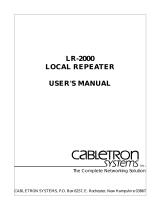 Cabletron Systems LR-2000 User manual
Cabletron Systems LR-2000 User manual
-
Cabletron Systems CTP100T User manual
-
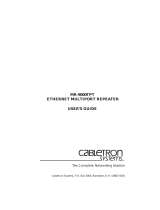 Cabletron Systems MR-9000TPT User manual
Cabletron Systems MR-9000TPT User manual
-
 Cabletron Systems THN-MIM User manual
Cabletron Systems THN-MIM User manual
-
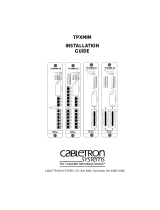 Cabletron Systems TPXMIM-33 Installation guide
Cabletron Systems TPXMIM-33 Installation guide
-
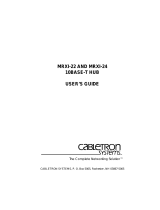 Cabletron Systems EPIM F3 User manual
Cabletron Systems EPIM F3 User manual
-
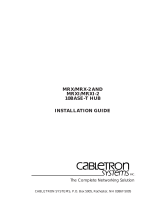 Cabletron Systems MRXI Installation guide
Cabletron Systems MRXI Installation guide
-
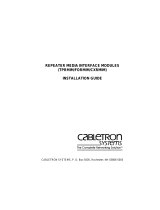 Cabletron Systems FORMIM-22 Installation guide
Cabletron Systems FORMIM-22 Installation guide
-
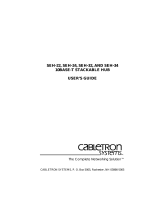 Cabletron Systems SEH-34 User manual
Cabletron Systems SEH-34 User manual
-
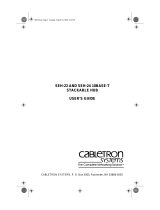 Cabletron Systems SEH-22 User manual
Cabletron Systems SEH-22 User manual
Other documents
-
PAC SWI-RC Tech Brief
-
DoubleSight DS-1900WA User manual
-
Digitus DN-50031 User manual
-
Abus TV8622 Datasheet
-
Legrand Video Terminator - 364412-01 Operating instructions
-
Belkin F4F315-T User manual
-
Allied Telesis AT-RH505BE Quick Install Manual
-
 Thermo Fisher Scientific PeakNet-PA System Installation guide
Thermo Fisher Scientific PeakNet-PA System Installation guide
-
 Thermo Fisher Scientific PeakNet-PA System Installation guide
Thermo Fisher Scientific PeakNet-PA System Installation guide
































